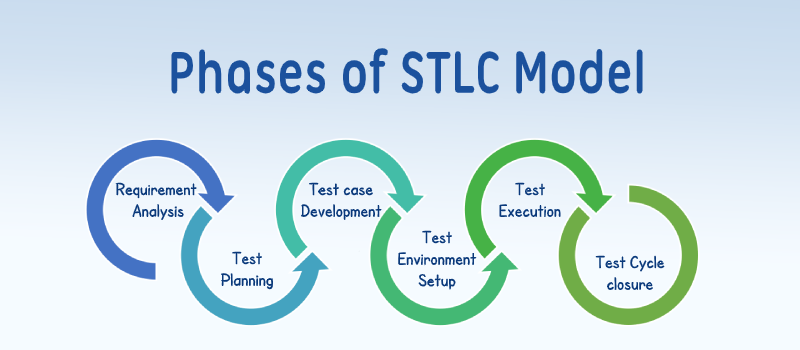Sharing is caring!
Think of a scenario where you have gone to the market to buy a laptop. Before buying the laptop, you will look into its features, keys working properly, RAM, Storage, SSD, etc. You look for everything before buying it to make sure it is error-free. That’s simply testing.
Testing is a process to evaluate if a system works properly per the specifications. It is done to ensure that the system is functioning correctly and is good to go.
Now, let us understand the Software Testing terminology.
What is Software Testing?
Software testing evaluates the software to be error-free and if it meets all the technical and user requirements. It is done to check all the attributes, such as reliability, re-usability, scalability, performance, etc.
There are various types of software testing, which we will study later in this blog.
How does Software Testing work?
Software testing consists of the following two steps –
Verification – A set of tasks is enforced to verify the correctness of specific functions in the software.
Validation – Another set of tasks to ensure that the software meets customer requirements.
In simple words, verification means, “Is the software that we are building working correctly?” and validation means, “Is the correct software been built for our customers?”
Software Testing Life Cycle (STLC)
The Software Testing Procedure is known as Software Testing Life Cycle. It consists of the following steps from top to bottom –

Requirement Analysis – The tester closely analyses the requirements of clients.
Test Plan Creation – The efforts and cost estimation documents are prepared after the requirement analysis phase is completed.
Environment Setup – This doesn’t come under the tester role. Senior developers set up a group of essential hardware and software to create the test environment.
Test case Execution – Case development and execution activity are performed via testers which are further reviewed by the Quality Assurance team. The Requirement Traceability Matrix is prepared, which is used to track the requirement via mapping the test cases with the requirement specification.
Defect Logging – In this step, the tester and developer collaborate to determine the completion criteria on various terms, such as cost, time consumption, quality, etc. If any defect is found, the software is sent to the development team to fix the defect.
Test Cycle Closure – This report includes documentation about software design, development, testing results, and defect reports.
Now, let’s have a look over the types of Testing.
Types of Software Testing
There are mainly two types of Software Testing – Manual Testing and Automation Testing.

Manual Testing – As the name suggests, testing the software to check if it meets the client’s requirements without using any automation tools is known as manual Testing. It is the procedure of verification and validation.
Manual Testing is further classified into three parts – White Box, Black Box, and Grey Box Testing.
White Box Testing – The developer inspects each line of code.
Black Box Testing – Test engineers check if the software meets the client’s requirements, bugs, etc.
Black Box Testing is categorized into two parts –
Functional Testing – The test engineers do functional or Component Testing systematically to check if the software components meet the requirement specification.
There are three functional testing types: Unit, Integration, and System Testing.
Unit Testing – The test engineers independently test the application modules or the functionality of all the modules.
Integration Testing: The data flow between the dependent modules or the interfaces between the two features is tested.
Integration Testing is of two types – Incremental and Non-Incremental Integration Testing.
Incremental Integration Testing: The addition of the modules and Testing of the data flow between the modules is known as Incremental Testing.
Incremental Testing is again of two types –
Top-Down Incremental Integration Testing – While adding the modules, the child of the earlier ones are added.
Bottom-Up Incremental Integration Testing – The parent of the earlier ones is added while adding the modules.
Non-incremental Integration Testing – Non-incremental Testing or Big Bang Method is used when the data flow is complex, and parents or children are difficult to be classified.
System Testing – is also known as end-to-end Testing, where the production and test environment work parallelly.
Non-functional Testing – It checks the performance, stress, load, compatibility, and usability testing.
Non-functional Testing is categorized into three parts – Performance, Usability, and Compatibility Testing.
Performance Testing – consists of four types of Testing, Load, Stress, Stability, and Scalability.
Usability Testing – is used to analyze the user-friendliness and the bugs detected at the software’s end-user interface.
Compatibility Testing – The application’s functionality is checked with the help of specific software and hardware.
Grey Box Testing – is a combination of White and Black Box Testing.
Automation Testing – There is no human interference in Automation Testing, and specific tools are used to automate the manually designed test cases.
Until now, you should have an idea about how software testing works. There are various tools to perform software testing, such as test management, bug tracking, automated and performance testing, etc.
At LearNowX, learning has been made easier via our industry experts, in-house training, and much more.
If you are interested in software testing, software development, want to be a trained professional in the field of front-end development course, full stack software development, and many as such, get enrolled at LearNowX and enhance your technical skills with us.
Boost your knowledge with LearNowX.
Thank you for reading!







